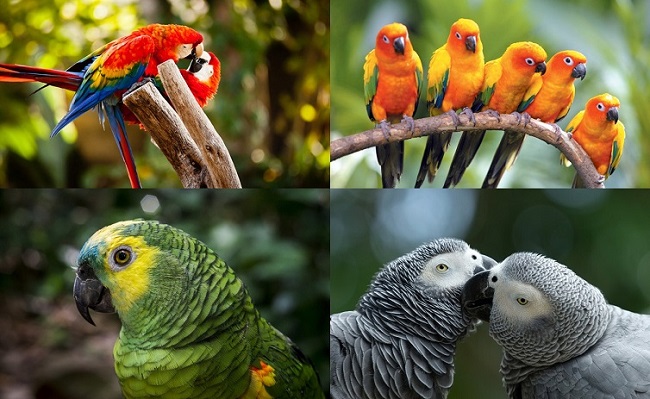Parrots, with their vibrant plumage and vivacious personalities, are among the most recognizable birds worldwide. Their intelligence and sociability have made them popular as pets, while their unique behaviors continue to intrigue researchers.
But what Facts make these feathered friends truly stand out? Let’s explore the intriguing world of Parrots in greater detail.

The Parrot Family
Parrots belong to the order Psittaciformes, comprising over 393 species divided into three families: Psittacidae (true Parrots), Cacatuidae (cockatoos), and Strigopidae (New Zealand Parrots). These birds are most common in tropical and subtropical regions but can be found worldwide.
Remarkable Intelligence
Parrots are known for their exceptional intelligence, rivaled only by crows and primates. Some species, like the African Grey Parrot, are known to have cognitive abilities equivalent to a three to five-year-old human child. These birds are famous for their problem-solving skills, memory, and the ability to understand complex concepts.
Mimicry Skills
Parrots are renowned mimics, with many species capable of imitating human speech and other sounds. They learn to mimic as a form of social interaction, not because they understand the language. The Hill Mynah and African Grey Parrot are considered the best at mimicking human speech.
Longevity
Parrots are among the longest-lived birds. While the lifespan varies by species, many Parrots can live for several decades in captivity with proper care. Some larger Parrots, like macaws and cockatoos, can live up to 80 years or more.
Monogamy in Parrots
Parrots are usually monogamous, forming bonds with a single mate for life. They engage in mutual grooming, share food, and rear their young together. Some Parrots exhibit signs of grief when their partner dies, refusing to eat or interact with others.
Parrots and Conservation
Unfortunately, many Parrot species are threatened due to habitat loss, illegal pet trade, and hunting. Over 100 species are listed as threatened on the IUCN Red List. Conservation efforts are underway globally to protect these beautiful and intelligent birds.
Vibrant Plumage and Why it Matters
Parrots are celebrated for their rich, colorful plumage. The brilliant hues range from the vibrant Scarlet Macaws to the subtle elegance of the African Grey Parrots. But their colors aren’t just for show.
Parrots’ vibrant colors play a significant role in communication and mate selection. Interestingly, despite their bright colors, Parrots have excellent camouflage abilities, as their plumage blends well with leaves and shadows in their natural habitats.
Parrots’ Diet: Not Just for Crackers
While often portrayed as cracker-loving in pop culture, Parrots have a diverse diet in the wild, feeding on fruits, nuts, seeds, and sometimes even small insects. Some Parrots, like the lories and lorikeets, have a specialized brush-tipped tongue for feeding on nectar.
In captivity, a well-balanced diet is crucial to a Parrot’s health and longevity, often including fresh fruits, vegetables, and specialized Parrot pellets.
Parrots in Culture and Folklore
Parrots have been part of human culture and folklore for centuries. Native tribes in South America see Parrots as symbols of wisdom and warning.
In Hindu culture, the deity of love and desire, Kamadeva, is often depicted with a Parrot as his mount. Today, Parrots remain a symbol of exoticism and nature’s vibrancy.
Conclusion
Parrots are truly intriguing creatures, blessed with intelligence, longevity, vibrant colors, and fascinating social behaviors.
Their ability to form strong bonds with humans makes them popular pets, while their distinct characteristics continue to fascinate researchers worldwide.
However, it’s crucial to remember that owning a Parrot is a significant commitment due to their long lifespan and high intellectual and social needs.
Ensuring these creatures’ conservation and welfare, whether in the wild or captivity, is a responsibility we must all share.
























